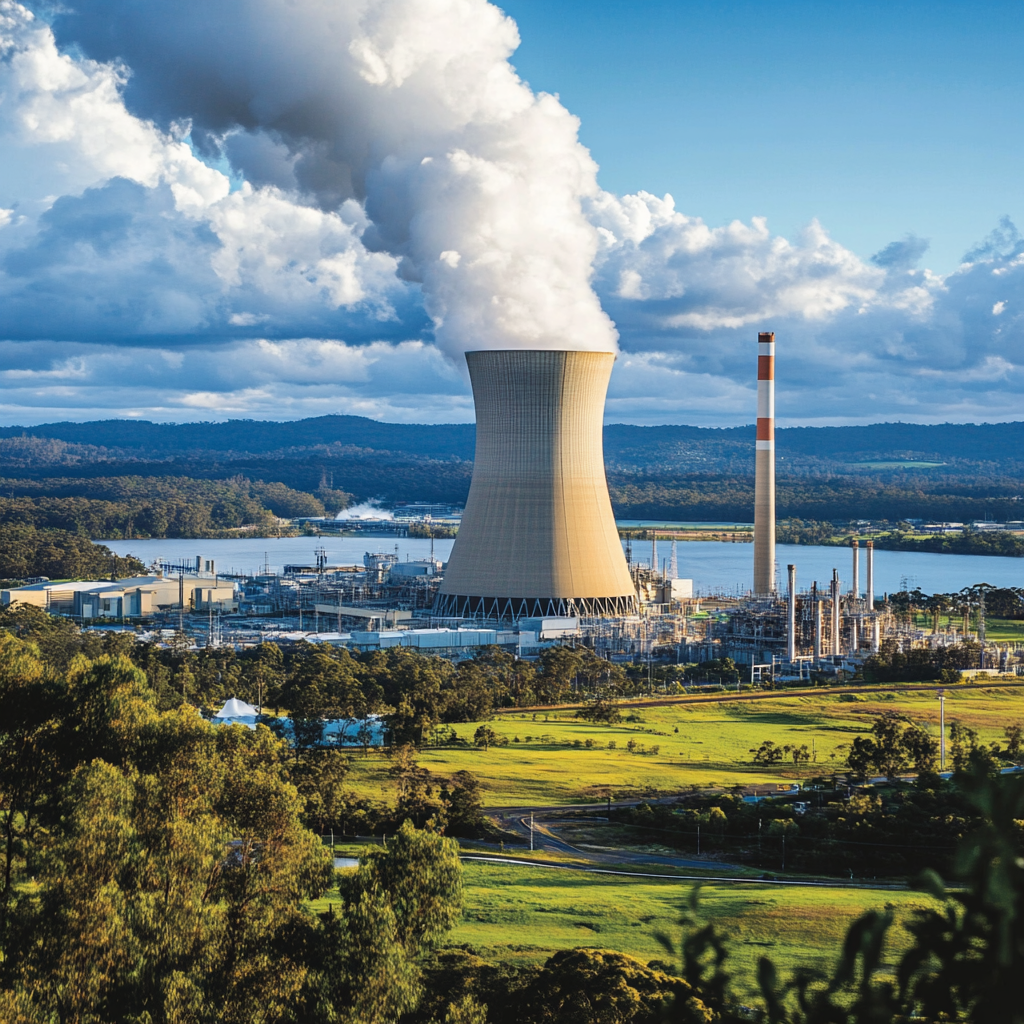
- Proposed nuclear reactors at Callide and Tarong could significantly exceed current water usage, raising concerns about strain on local water supplies and emergency preparedness.
- Experts are divided, with critics citing inadequate infrastructure and planning, while nuclear advocates point to modern, self-cooling reactor designs and alternatives like dry cooling.
- The Coalition defends its nuclear plan as cost-effective and infrastructure-efficient, but environmental groups and researchers question its feasibility under Australia’s water-scarce conditions.
Plans to build nuclear power plants in Queensland are drawing criticism from environmental groups and experts, who warn that such facilities could place unsustainable pressure on local water supplies—even during normal operations—and pose contamination risks in the event of an accident.
An analysis by the Queensland Conservation Council (QCC) suggests that two nuclear reactors proposed under the Coalition’s energy policy could require significantly more water than the coal-fired stations they are intended to replace. According to the report, a new nuclear reactor at the Callide site could use twice as much water as the existing coal plant, while the proposed reactor at Tarong could consume 55% more water than its coal-fired counterpart.
Tarong currently draws up to 30,000 megalitres annually from Boondooma Dam, which also supplies drinking water to the nearby town of Kingaroy and supports agriculture along the Boyne River. When water levels in Boondooma Dam are low, the Tarong plant may also access Wivenhoe Dam—Brisbane and Ipswich’s primary water source—though the high costs involved make this a last resort.
The QCC report also raises concerns about water requirements in the event of a nuclear emergency. In the 2011 Fukushima disaster, approximately 1.3 million tonnes of seawater were used to cool the damaged reactors. This irradiated water was stored on-site for more than a decade and began being released into the ocean in 2023 via an undersea tunnel.
QCC director Dave Copeman argues that the proposed Queensland sites lack sufficient water for both day-to-day operations and emergency scenarios. He also claims there is no clear plan for managing contaminated cooling water in the event of a meltdown.
However, experts in nuclear engineering say modern reactor designs significantly reduce such risks. Tony Irwin, honorary associate professor at the Australian National University and technical director of SMR Nuclear Technology, emphasized that today’s reactors incorporate post-Fukushima safety innovations. For instance, the Westinghouse AP1000 features passive cooling systems that function without external water sources in emergencies.
“The modern AP1000 reactor is entirely self-contained in crisis situations. It doesn’t rely on drawing water from the environment to stay cool,” Irwin said.
Callide’s current annual water allocation stands at 20,000 megalitres from Callide Dam, which itself is replenished by Awoonga Dam. As of the latest readings, Awoonga was at 46% capacity, while Callide Dam—also a drinking water source for Biloela and an agricultural lifeline—was only 16.5% full. The QCC estimates that a nuclear plant at Callide would require an additional 27,000 megalitres of water annually.
QCC renewable energy engineer Clare Silcock, who conducted the technical analysis, criticized the lack of detail in the Coalition’s nuclear proposal. She based her projections on the Frontier Economics report, which the Coalition has cited to argue that seven nuclear reactors could be 44% cheaper than the current government’s renewables-based energy plan.
That report models a nuclear contribution of roughly 100,000 gigawatt hours to the National Electricity Market (NEM)—which includes Queensland, New South Wales, ACT, Victoria, Tasmania, and South Australia—by 2050. With six of the proposed reactor sites within the NEM, Silcock assumed an even distribution of electricity generation across those sites.
Emeritus professor Ian Lowe of Griffith University noted that nuclear power stations generally require about 15% more water than coal-fired plants of similar capacity. “If Queensland is expected to generate its share of the projected nuclear output using just the Tarong and Callide sites, there simply isn’t enough water,” Lowe said. “The Frontier report essentially assumes an even broader nuclear rollout than currently announced.”
Irwin acknowledged that nuclear plants with indirect cooling towers do use more water than coal plants, but pointed out that dry-cooling options are available. These systems use air instead of water for cooling, reducing water consumption dramatically—though at the cost of lower efficiency and higher expenses. “Dry cooling enables nuclear power plants to be located virtually anywhere, even in water-scarce regions,” Irwin said.
Shadow energy minister Ted O’Brien dismissed the QCC report as “flawed and highly politicised,” criticizing it for relying on outdated assumptions from a 2006 feasibility study. He defended the Coalition’s “coal-to-nuclear” strategy, which aims to reuse existing infrastructure, including water pipelines, transmission lines, and workforces.
O’Brien pointed to the Palo Verde Nuclear Generating Station in Arizona as an example of sustainable nuclear operation in a water-constrained environment. Palo Verde, located in the Sonoran Desert, is the world’s only nuclear plant not sited near a major body of water and uses treated wastewater from nearby municipalities.
Still, some experts remain skeptical of U.S. comparisons. Martin Anda, associate professor at Murdoch University’s Centre for Water, Energy and Waste, argued that Australia’s conditions are fundamentally different. “Australia lacks the extensive water resources and nuclear regulatory frameworks found in parts of the U.S. and Europe,” he said. “We’re not ready for that kind of transition just yet.”
Correction: This article was amended on 24 March 2025 after the Guardian was notified of a significant error in the QCC’s initial calculations. An earlier version incorrectly stated that the proposed dams could not access sufficient water in an emergency. The article has been updated in line with revised findings.

0 Comments